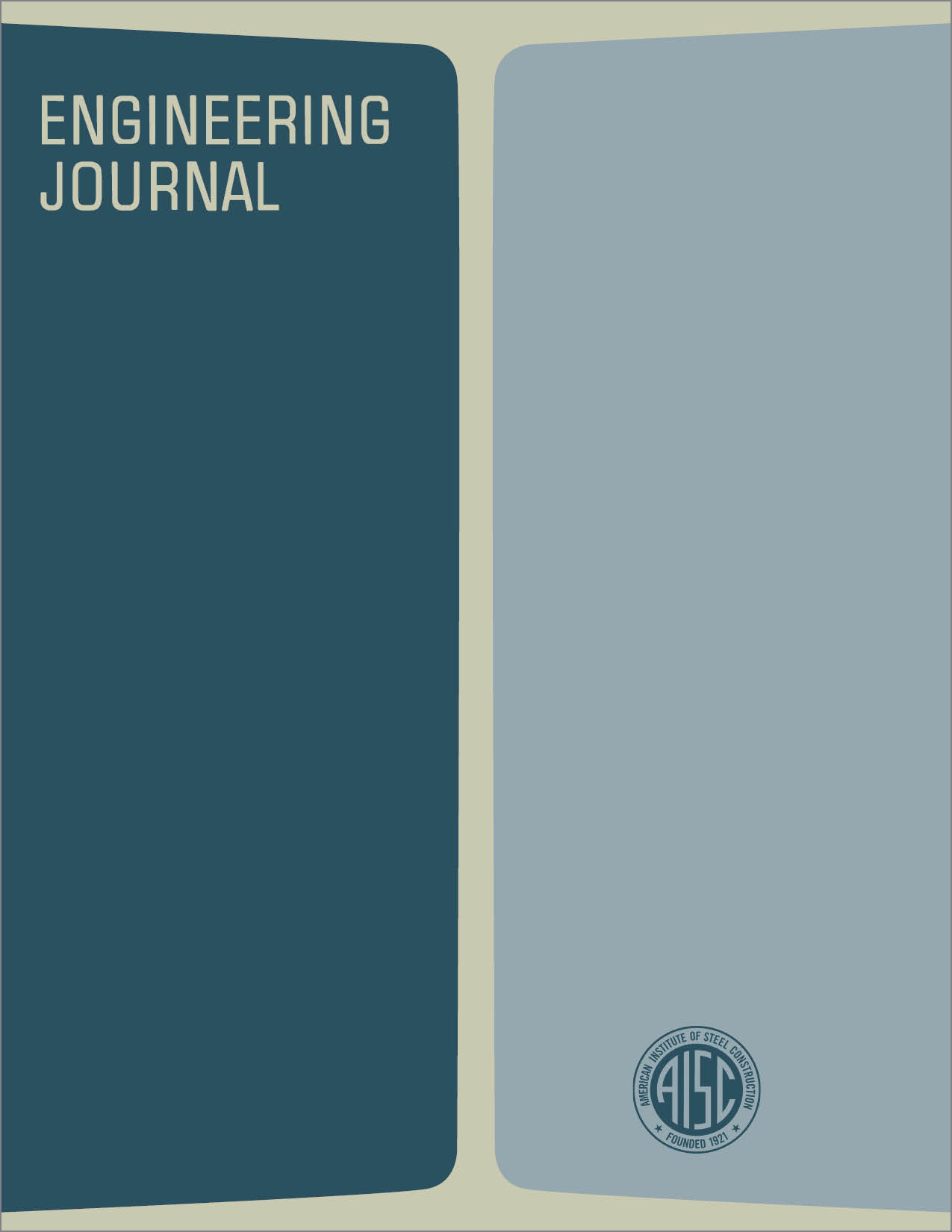Combined Shear and Tension on Grouted Base Details
DOI:
https://doi.org/10.62913/engj.v16i1.328Abstract
Braced structures with large height-to-width ratios, i.e., transmission towers, water towers or industrial equipment support towers, when subjected to lateral loads, often have resultant uplift and shear forces transmitted to their foundations. The base details must transmit combined tension and shear from the column to the foundation. For ease of construction, the columns are often set with base plates shimmed 1 to 2 in, above the top of the foundation; the shimmed volume is later grouted to complete the base detail. The two major codes governing steel and reinforced concrete construction do not specify design formulas for grouted anchor bolt-base plate connection details. The Uniform Building Code, representative of general building codes, states bolts shall be solidly embedded in plain or reinforced concrete, and the connection shall be designed so that the tension or shear on every bolt is not greater than a value defined in their tables. Previous investigators have studied anchor bolts embedded in concrete subjected to combined shear and tension, but have not included the effects of the grout.

